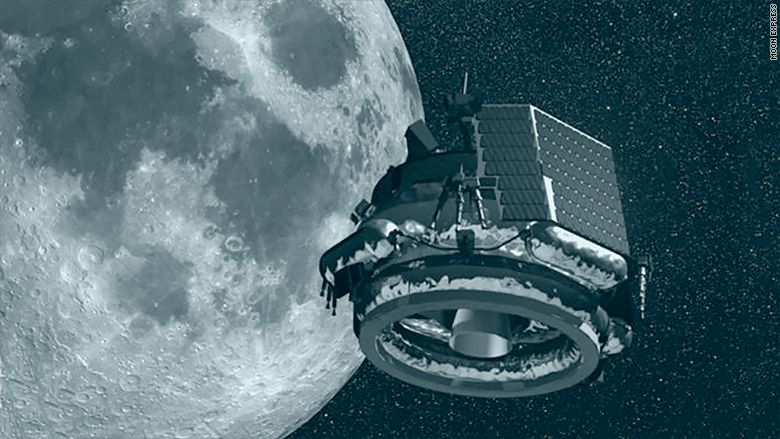Page 10701
Aug 3, 2016
How it works: The first programmable quantum computer module based on ions
Posted by Bruno Henrique de Souza in categories: computing, quantum physics

O primeiro totalmente reconfigurável e programável módulo de computador qu ntico.
Joint Quantum Institute http://goo.gl/dc6z4a
Aug 3, 2016
Russia’s Nerekhta-2 Combat Robot to Be Presented in 2016
Posted by Dan Kummer in category: robotics/AI
The Russian Nerekhta-2 combat robot’s new capabilities will be showcased at a proving ground in late 2016, Deputy Director General for Advanced Research Fund told Sputnik.
MOSCOW (Sputnik) — Nerekhta-2 will be equipped with a new type of ammunition and will be capable of tackling enemies larger and stronger than itself, according to Igor Denisov.
“We have chosen the Nerekhta platform as the most suitable for making a number of changes, this is a ‘lab’ for testing the most promising solutions for ground robots supporting combat operations, including in the city. I think we will show the Nerekhta’s new capabilities at a proving ground at the end of the year. It will have an air component, there will be additional automation elements,” Denisov said.
Continue reading “Russia’s Nerekhta-2 Combat Robot to Be Presented in 2016” »
Aug 3, 2016
New “Neural Dust” sensor could be implanted in the body
Posted by Bruno Henrique de Souza in categories: bioengineering, neuroscience

Engenheiros da University of California, Berkeley construíram os primeiros, sensores sem fio do tamanho de poeira que podem ser implantados no organismo, trazendo mais perto o dia em que um dispositivo Fitbit poderia monitorar os nervos internos, músculos ou órgãos em tempo real.
Aug 3, 2016
Would it be immoral to send out a generation starship?
Posted by Andreas Matt in categories: biotech/medical, education, ethics, food, health, neuroscience, security, space travel
If human beings are ever to colonise other planets – which might become necessary for the survival of the species, given how far we have degraded this one – they will almost certainly have to use generation ships: spaceships that will support not just those who set out on them, but also their descendants. The vast distances between Earth and the nearest habitable planets, combined with the fact that we are unlikely ever to invent a way of travelling that exceeds the speed of light, ensures that many generations will be born, raised and die on board such a ship before it arrives at its destination.
A generation ship would have to be a whole society in microcosm, with hospitals and schools, living quarters and perhaps entertainment districts, a security force, maybe even a judiciary. It would need to be able to provide food for its crew, and that might require agriculture or aquaculture, perhaps even domestic animals (which might also be needed for the colonisation effort). Its design therefore presents a major challenge: not just to engineers but also to social scientists. How should the crew be selected and the environment structured to minimise interpersonal conflict? What size of population is optimal for it to remain committed to the single overarching project of colonising a new planet without too much of a risk of self-destructive boredom or excessive narrowing of the gene pool? Does mental health require that a quasi-natural environment be recreated within the ship (with trees, grass and perhaps undomesticated birds and small animals)?
As well as the technological and social challenges confronting the designers of such ships, there are fascinating philosophical and ethical issues that arise. The issue I want to focus on concerns the ethics of a project that locks the next generation into a form of living, the inauguration of which they had no say over, and that ensures their options are extremely limited.
Continue reading “Would it be immoral to send out a generation starship?” »
Aug 3, 2016
Gogoro starts an electric scooter-sharing program in Berlin — By Sean O’Kane | The Verge
Posted by Odette Bohr Dienel in categories: energy, environmental, transportation
“Gogoro is bringing 200 of its stylish all-electric scooters to Berlin. Starting today, anyone over 21 with a valid driver’s (or motorcycle) license will be able to rent one of the scooters as part of a new scooter-sharing program”
Aug 3, 2016
Zoltan Istvan, Transhumanist Party Presidential Candidate
Posted by Zoltan Istvan in categories: geopolitics, transhumanism

This has been a top trending video on SF Gate (the San Francisco Chronicle’s main website) for a few days now: http://video.sfgate.com/Zoltan-Istvan-Transhumanist-Party-Pr…e-31214223 The story is here and was also shared by Drudge Report: http://www.sfchronicle.com/opinion/openforum/article/Chip-en…694149.php
Biohacker says the U.S. Needs a Science Party Source: SFGate.com
Aug 3, 2016
Google is Developing ‘Bioelectronic Medicines’ to Try And Cure Chronic Illnesses
Posted by Shailesh Prasad in categories: biotech/medical, electronics
Verily and GlaxoSmithKline have partnered to form Galvani Bioelectronics, a new company which will focus on the research, development, and commercialization of bioelectronics. One of the first projects will be to develop a precision device that can fix type 2 diabetes.
Verily, formerly known as Google Life Sciences, is partnering with GlaxoSmithKline (GSK) to develop bioelectronic medicines that can “harness electrical signals in the body to treat chronic disease.”
The collaboration marries GSK’s pharmaceutical expertise with Verily’s prowess in developing tiny low power electronics. The unification will result in a new company called Galvani Bioelectronics, after Italian scientist Luigi Aloisio Galvani who was an early pioneer of bioelectricity.
Aug 3, 2016
CRISPR could help scientists rewrite human DNA, develop perfect ‘being’
Posted by Shailesh Prasad in category: biotech/medical

Is the “perfect human” a realistic goal? Well, a new scientific process promises to tweak selected bits of your DNA.
Aug 3, 2016
This guy used over 80,000 old photos to create a Google Street map of New York City in the 1800s
Posted by Shailesh Prasad in category: mapping
New York City has a long and sprawling history, but looking at the city today, it’s hard to tell what it looked like in the past. Luckily, an enterprising coder has solved that problem by creating a Google Street View map for New York City for the late 1800s and early 1900s.
Developer Dan Vanderkam collaborated with the New York Public Library to plot all the old photos from the Photographic Views of New York City, 1870s-1970s collection on an interactive map.
The project, called OldNYC, lets you browse 19th-century New York as easily as you would click around on Google Maps. The collection contains over 80,000 original photographs.













